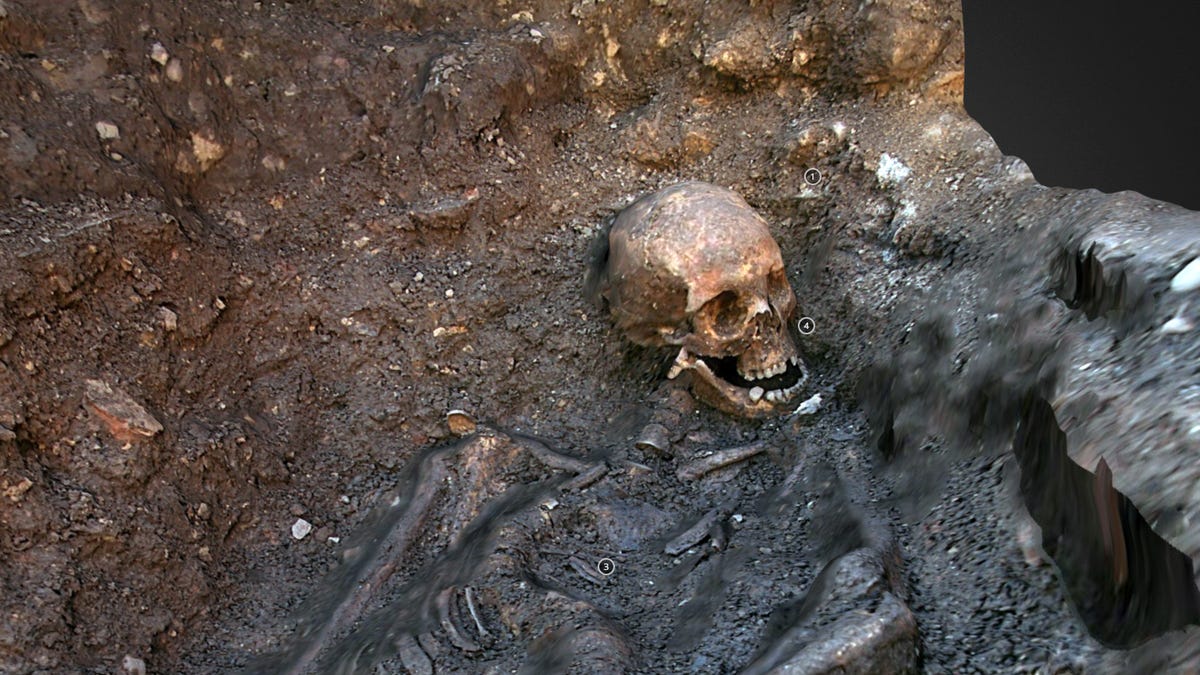Now you can explore an interactive 3D model of Richard III's grave
Using 3D platform Sketchfab, researchers reconstruct an interactive model of the English king's burial site as he was found under a parking lot in Leicester.
After centuries laying lost, the remains of 15th-century king Richard III were retrieved from beneath a parking lot in Leicester in the UK.
Now, to coincide with the first anniversary of the procession of his body across Leicestershire and reinterment at Leicester Cathedral in 2015, a team of archaeologists has created an interactive 3D model of that parking lot gravesite, complete with royal bones.
Available on 3D platform Sketchfab, the model reveals with how little concern or ceremony the body was treated. There is no coffin, no evidence of a shroud, no gold or jewels that would usually befit a royal burial.
Even the manner in which the grave was dug is revealing. It was too short for the king's body, with sloping sides and an uneven base. The position of the body was slumped to the side because of the poor fit.
The king was killed at the Battle of Bosworth Field on August 22, 1485, in the last significant battle of the War of the Roses between the Houses of Lancaster and York. Richard III was attempting to kill his rival, Henry Tudor (later King Henry VII, upon Richard III's death, Henry seized the crown).
He was the last English king to die in battle. And yet, because he was defeated and overthrown, Richard III's funeral was reportedly not afforded any pomp.
The unceremonious burial site confirms this inelegant end, and the 3D model allows anyone to see this for themselves, with tags on parts of the site that show items of interest, such as fatal wounds.
This was reconstructed from photographs of the site using a process called photogrammetry.
"Photographs and drawings of the grave, whilst dramatic, are only two dimensional and do not always best show nuances in spatial relationships that a three-dimensional model can," said Mathew Morris, the University of Leicester Archaeological Services site supervisor who first discovered the king's remains.
"Photogrammetry provides a fantastic analytical tool that allows us to examine the grave from angles that would have been physically difficult or impossible to achieve during the excavation, and gives us the ability to continue to examine the king's grave long after the excavation has finished."
You can explore the gravesite for yourself on the Sketchfab website, or below. If you want to read more about the life of Richard III, you can start here.


